Contact Form
You can email us at info@immersionvr.co.uk. Alternatively, you can fill in our contact form below and we will get back to you as soon as possible.
VR video and 360 VR are essentially interchangeable terms. They refer to videos that are captured using specialist omnidirectional cameras which enable the filming of an entire 360 degrees at the same time.
In the finished video the user is free to look around the entire scene. In contrast to regular videos, VR videos provide an immersive, interactive experience. The user often experiences the feeling of actually “being there”.
Contrary to popular belief, you do not need a special device in order to view 360 videos. They can be viewed on the vast majority of devices, including mobile.
The user can swipe or scroll across the screen in order to view the entire 360 degrees of the scene. This can be particularly useful for commercial applications, such as virtual reality real estate tours.
Take a look below at our VR video of Roche Abbey in South Yorkshire, England. It can be viewed on any device, including mobile, and you can swipe across the video to view the entire scene. Make sure to full screen the video for the best experience:
When a lot of people think about VR they think about computer generated images (CGI). However, VR videos or 360 VR videos are typically filmed in the real world. The idea is to place the user in the environment that the video was filmed in.
Just as with a normal video, the filmmaker can control the narrative. The difference is that the experience of the VR video is much more immersive and memorable.
However, 360 VR videos create the most immersive experience when viewed on a VR headset or in a specialist environment, such as an immersive classroom. There are some cheap VR headsets on the market and they provide a convenient way of experiencing VR.
In fact, VR can be experienced on any android mobile thanks to Google Cardboard. The Google cardboard viewer is a simple cardboard device that your phone fits into. They can be picked up from as little as £5.
The main difference between regular filming and VR filming is the type of camera used. Specialist cameras called omnidirectional cameras are used for virtual reality filming. These cameras film every direction at once, hence the name, omnidirectional.
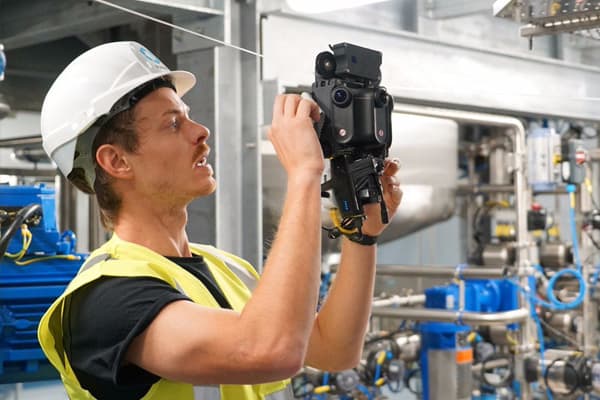
There are a wide variety of cameras and virtual reality filming techniques available depending on the application. There are also two different types of VR video: monoscopic and stereoscopic.
The finished VR video can either be monoscopic or stereoscopic. Monoscopic is where there is one image directed to both eyes and stereoscopic is where there are two images, one for each eye.
Monoscopic VR is great because it is very effective at capturing dynamic movement and a headset is not required to the view the video. This makes monoscopic video very versatile and it is useful for most applications, including social media uploads.
However, stereoscopic VR offers a more immersive experience as it produces a 3D effect where some objects appear closer than others. This effect more closely resembles how we see with the human eye.
Stereoscopic videos do take more time to plan and execute due to their complex nature. They also require a VR headset to be viewed properly.
Kandao is one of the leading manufacturers of 360 omnidirectional cameras and the Obsidian is a multi-award-winning model. The company has won prestigious awards for the design and innovation of this camera.

The Obsidian has 6 lenses and can shoot either monoscopic or stereoscopic video in up to 8K resolution. The camera also boasts state of the art Optical Flow stabilisation which helps to produce a seamless video. Although diminutive in stature, this camera is a beast of a device and it is our go-to camera for virtual reality filming .
In just a couple of years, Insta360 has gone from a relatively unknown brand to one of the industry leaders. In fact, Google has worked with the company directly on their Street View programs.
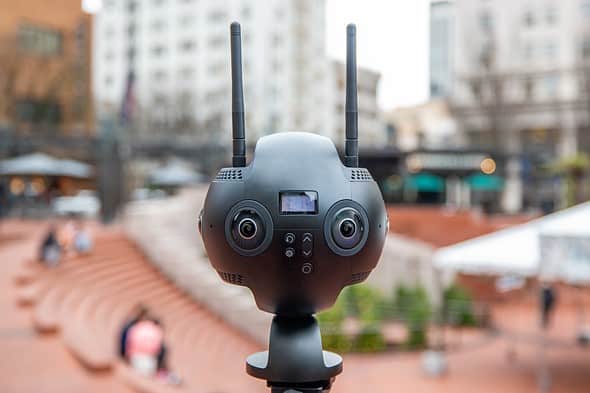
As with the Obsidian, the Pro 2 has 6 lenses and can shoot 8k stereoscopic footage. It also has Optical Flow stabalisation and it is live-stream capable. This camera also boast four microphones for ambisonic spatial audio, a feature which produces fully immersive audio along with the video footage.
Many companies are starting to use this camera for their virtual reality filming so it definitely needed a mention. We expect more great things to come from Insta360, so we’re staying tuned!
No, when we say Titan, we’re not referring to a Greek God holding up the Earth. The Titan is a brand new cinematic quality 360 Camera. It is, however, a God of a cameratic productions.
The Insta360 Titan features the largest sensors in any unibody VR camera. This ensures that the camera maximizes image quality, dynamic range, low-light performance, and color depth.
Just as with the other cameras mentioned, the Titan has Optical Flow stabalisation. However, this camera is more of a push towards the video quality we have become accustomed to in cinema. It represents somewhat of a leap in virtual reality filming.
The GoPro Fusion is an extremely versatile action cam that films VR videos. The compact camera has 2 lenses, one on the front and one on the back. Together these lenses cover a full 360 degrees.
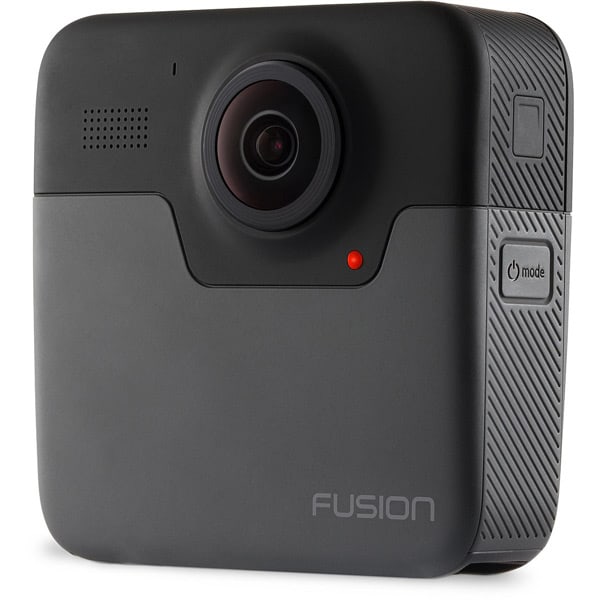
This is a great camera for those that are thinking of getting into VR production and are wanting to get their feet wet in VR filming. However, that’s not to say that the Fusion doesn’t have a place in virtual reality filming, it still packs a punch for its size.
Although the GoPro Fusion doesn’t boast the same video quality as the Obsidian, it excels in close quarters scenarios where mounting a camera can be challenging. We take this camera with us everywhere because you never know when you might need it!
When the video is filmed, the omnidirectional camera records many overlapping angles at the same time. This ensures the whole 360 degrees is captured.
The hard part, however, comes next. The separate angles must then be merged together in a process known as stitching. This is arguably the most important part of VR video production.

Stitching can be a difficult and time-consuming process but it is key to creating an immersive video. Specialist software, such as Mistika VR, is used throughout the stitching process. Any lens distortion is minimised before the footage is carefully pieced together like a jigsaw.
Colour correction and image stabilisation is then carried out to ensure that the video is clear and consistent. Where audio has been used, this must also be synchronised with the video footage. At Immersion VR, we can produce immersive audio using a state-of-the-art technique known as spatial audio.
If the stitching process is not carried out effectively, the end result can be a clunky and disorientating experience. The aim is to produce a seamless, spherical video with consistent colour and contrast, which produces a truly immersive experience.
Monoscopic 360 videos can be viewed on practically any device. For this reason, they can make excellent promotional videos for social media platforms such as YouTube and Facebook. In fact, 360 YouTube videos can easily be embedded on a website to provide users with a memorable experience.
Take a look at the promotional video below that we produced for Walkers Nurseries in South Yorkshire. Don’t forget to full screen the video for the best experience:
A 360 video stands out from the crowd and can really showcase a scene or event. One of the best examples of this is in the real estate industry. A virtual reality tour can be produced so that prospective buyers can take a full tour of the property from their device.
VR headsets are lowering in price and becoming much more common place. All the online giants such as Google and Facebook are moving towards the VR space. Google has been pushing VR headsets with its low cost offering – Google Cardboard.
And in 2015 Facebook acquired one of the biggest companies in the industry – Oculus VR. In 2018 they brought out the Oculus Go which is a mid-priced standalone headset. This means it requires no phone and has no wires.
Amazon have also recently made a move into VR with their Prime VR Video app which supports a range of headsets, including Oculus VR and Samsung Gear VR.
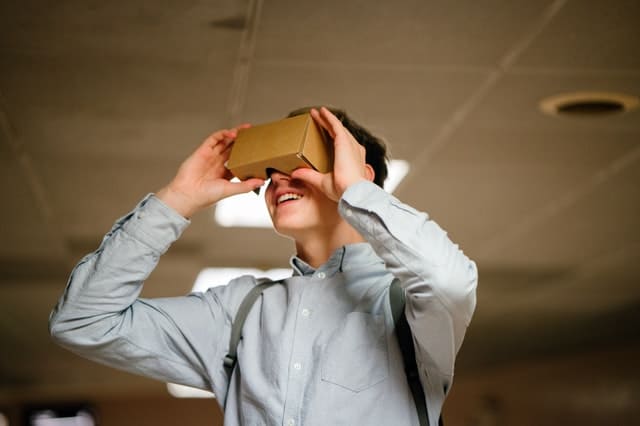
Practically any VR video can be viewed on a VR headset and they lend themselves extremely well to stereoscopic videos. This means they can provide a completely immersive 3D experience at a reasonable price point.
The technology and industry is moving at a fast rate so it’s an exciting time for VR at the moment.
Projection domes are large domes in which 360 degree videos are projected onto the internal walls.
The effect is a fully immersive environment into which many people can fit. The industry leaders in 360 projection domes are a company known as Igloo Vision.
They produce a wide range of domes varying in size and construction. They start with a compact 6m version which houses 12 people, and go all the way up to a huge 21m version which can house a whopping 750 people!

These domes can be used for a wide range purposes including: brand engagement, festival installations, team building and training, design concepts and visualisation, and even meditation!
Projection domes can be a great educating tool and are often used by museums and universities. That brings us onto the next topic: immersive classrooms.
Immersive classrooms provide an exciting and inspiring way of learning.
Boasting a 360 degree learning environment, they encourage interaction whilst providing a thought provoking experience. 360 immersive classrooms can be used for a wide range of applications and ages including Primary, Secondary, and Special Needs.
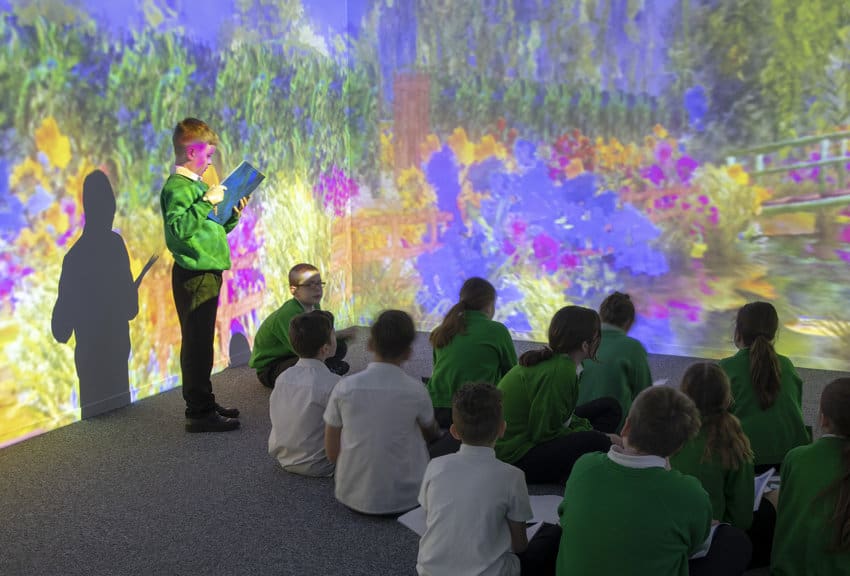
From children as young as reception age, immersive classrooms can provide engaging and interactive environments to stimulate their young minds and develop their core skills.
With secondary school pupils, the content is geared towards inspiring creative thinking and peer-driven problem solving.
For Special Needs pupils, immersive classrooms can be seen as an evolution of traditional sensory rooms. They provide a rich learning space that excels in creating stimulating or calming interactive environments.
Here at Immersion VR we are specialists in VR Video. We have worked with countless clients across the UK and overseas.
We create 360 videos for a wide range of applications including: promotional and social media videos, virtual reality real estate tours, brand engagement, and immersive classrooms.
We take care of the entire process, from capture to production, and we take great pride in the quality of our work.
Whatever your needs, please get in touch to find out more information about VR videos and the services we offer.
You can email us at info@immersionvr.co.uk. Alternatively, you can fill in our contact form below and we will get back to you as soon as possible.